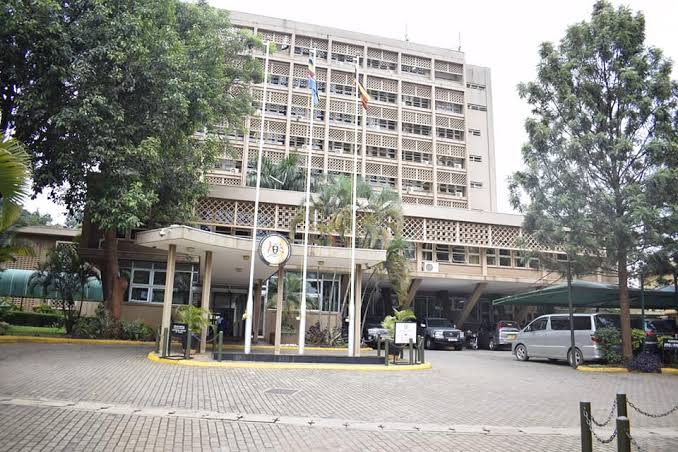
On Tuesday, the Ministry of Finance, Planning and Economic Development released the fourth quarter (Q4) expenditure allocations for the 2024/25 financial year. The total amount disbursed for the April to June 2025 period stands at Shs 19.79 trillion, representing 25.64% of the national budget. The funding will support government operations, development projects, and service delivery across all sectors.
According to the Permanent Secretary and Secretary to the Treasury, Mr. Ramathan Ggoobi, the release includes Shs 8.903 trillion for wages, non-wage recurrent expenditure, and development projects. An additional Shs 2.677 trillion is sourced from external financing, Shs 8.126 trillion has been allocated for debt servicing and treasury operations, and Shs 83.85 billion will come from local revenue.
A substantial portion of the funding—Shs 1.993 trillion—has been dedicated to covering government wages and salaries, while Shs 288.75 billion is set aside for pensions and gratuity payments. Statutory institutions have also received significant allocations, including Shs 172.64 billion for Parliament, Shs 94.22 billion for the Electoral Commission, Shs 58.23 billion for the Judiciary, Shs 17.46 billion for the Office of the Auditor General, and Shs 11.17 billion for the National Planning Authority.
Under the government’s Agricultural, Tourism, Mineral, and Science (ATMS) strategy, critical economic sectors have been prioritized. Agro-industrialization received Shs 524.68 billion, with Shs 130.77 billion earmarked for operations and research, and Shs 393.91 billion for development activities in institutions like the Ministry of Agriculture, NAGRC&DB, and NARO. In the tourism sector, Shs 41.12 billion was allocated to support activities under the Ministry of Tourism, Wildlife and Antiquities and the Uganda Tourism Board, including the development of the Source of the Nile project.
Mineral-based industrial development, particularly oil and gas, received Shs 224 billion. The Uganda National Oil Company (UNOC) secured Shs 166.5 billion to finance its share of the East African Crude Oil Pipeline (EACOP), while the Petroleum Authority of Uganda received Shs 6.88 billion for both operational and development activities. The science, technology, and innovation sector was allocated Shs 169.31 billion, targeting interventions under the Ministry of ICT and National Guidance, and NITA-U. This includes Shs 41 billion for last-mile internet connectivity through the Uganda Digital Acceleration Project and Shs 119.14 billion to strengthen the science economy.
Security, a core government priority, also received substantial funding. The Ministry of Defence and Veteran Affairs was allocated Shs 1.05 trillion—Shs 407.97 billion for operations and Shs 639.5 billion for development projects. The Uganda Police Force received Shs 144.72 billion, earmarked for contractual obligations, accommodation construction, and procurement of specialized machinery. State House was allocated Shs 196.07 billion for operational activities, while the Uganda Prisons Service received Shs 49.99 billion for production projects, construction works, and completion of grain storage facilities in Ruimi and Lugore Prisons.
The Ministry of Works and Transport received the largest infrastructure allocation at Shs 2.11 trillion, mostly for paying contractors working on national roads and the District, Urban, and Community Access Road (DUCAR) network. The funds also support projects such as the Standard Gauge Railway and ferry services under Kalangala Infrastructure Services. Meanwhile, the Ministry of Energy and Mineral Development received Shs 515.92 billion for rural electrification, power transmission infrastructure, and dedicated power lines to support manufacturing in Ntungamo. The Ministry of Kampala Capital City and Metropolitan Affairs received Shs 111.4 billion for the Greater Kampala Urban Development Project and general operations.
In the human capital development sector, the Ministry of Education and Sports received Shs 290.28 billion, including Shs 155.81 billion for non-wage operations and Shs 134.47 billion for projects such as the Uganda Secondary School Expansion Project (USEEP), and the rehabilitation of schools and health training institutions. Public universities, the Uganda Management Institute, and the Law Development Centre received Shs 110.35 billion, including Shs 17.97 billion for capital development. The Ministry of Health was allocated Shs 303.46 billion, most of which supports immunization through GAVI, facility upgrades, and procurement of medical equipment. National Medical Stores received Shs 110.65 billion for essential drugs, while Shs 57.65 billion went to the Uganda Cancer Institute and the Uganda Heart Institute. Regional referral hospitals, including Mulago and Butabika, received Shs 36.89 billion, primarily for non-wage operations. Local Governments received Shs 316.06 billion; however, no new development funds were released in Q4 as these were disbursed earlier in Q3.
The government’s commitment to wealth creation continues with Shs 529 billion released for the Parish Development Model, Shs 115 billion for Uganda Development Corporation, and Shs 18 billion for Uganda Development Bank. Funding for the Emyooga program had already been provided earlier in the financial year.
Revenue-generating agencies also received operational support. Uganda Revenue Authority was allocated Shs 124.43 billion, Uganda Registration Services Bureau received Shs 5.03 billion, National Citizenship and Immigration Control got Shs 17.1 billion, and the Uganda National Bureau of Standards received Shs 1.79 billion.
The final quarter release is expected to boost service delivery, ensure completion of key development projects, and stimulate economic activity as Uganda closes out the financial year.